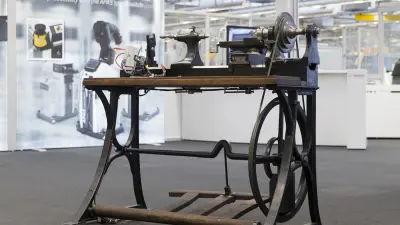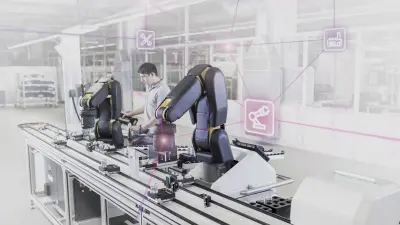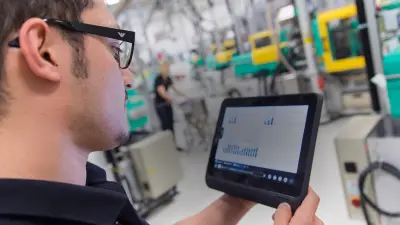Historical workbench fit for Industry 4.0

Connectivity is the theme of the future. The fact that even antique machines can be connected has been exemplified by an old Robert Bosch workbench that has been made fit for the future by means of the IoT Gateway.
From the past into the future
One hundred and thirty years ago, Robert Bosch was still using a pedal-powered workbench weighing 300 kilogrammes to make parts for the magneto, the product that marked Bosch’s breakthrough. Now the cast iron workbench has been taken out of the museum and into the Industry 4.0 era by the IoT Gateway from Bosch.

Tens of millions of
machines in Germany are without an Industry 4.0 connection — on a global scale, it is a market worth billions for retrofit solutions like the Bosch IoT Gateway
A smart museum piece
The “tuned” workbench on the one hand enables the monitoring of the processes involved in the perpetual quality control, and, on the other, constant equipment state monitoring to prevent unplanned downtimes. For process monitoring, sensors register, amongst other things, the revolutions per minute: too high or too low average speeds are detrimental to manufacturing quality when turning metal and can damage the tool. The data collected and transmitted by the IoT Gateway can be viewed by the foot pedal operator in real time on a monitor. He therefore always knows whether he has to pedal faster or slower to retain the optimal cycle time. Additionally, the connected workbench also recognises the smallest changes on the drive. With increasing age, the leather drive wheel and the spindle containing the work piece can start to slip: something that is invisible for the human eye. Sensors however recognise minute deviations. When the pre-defined limit is reached, the system automatically informs the respective maintenance team that the belts have to be replaced.

Fast and simple connectivity thanks to the IoT Gateway
IoT Gateway combines sensors, software and IoT-capable industrial control. Based on the ProSyst OSGi technology, the IoT Gateway provides a simple and quick connection to the software designed to systematically improve production processes: the Production Performance Manager.
Devices are connected via the new open machine language PPMP (Production Performance Management Protocol) to the Production Performance Manager. This software monitors and analyses the production data for further processing. A large number of machines within a company can be networked and connected to the company’s internal IT system. Monitoring is performed in real time.
The connection of machines and real-time monitoring enables pro-active maintenance which reduces downtimes. Energy efficiency and machine productivity are increased. Customers can, depending on the need, enhance the IoT Gateway with extra sensors. The sensors register temperature, pressure, power consumption, oil quality and other parameters. The data is sent in real time by the software into a format that can be incorporated within the production environment of the respective company.
The IoT Gateway does not need programming — it only has to be configured via a browser which drastically shortens commissioning. The system can be taken out of the packaging and used immediately. Everything is set-up and ready for use.
Summary
The IoT Gateway from Bosch makes the oldest machines compatible with Industry 4.0 — even a 130 year old workbench out of a museum. It enables companies with an older machine park to be part of this era of connection.


